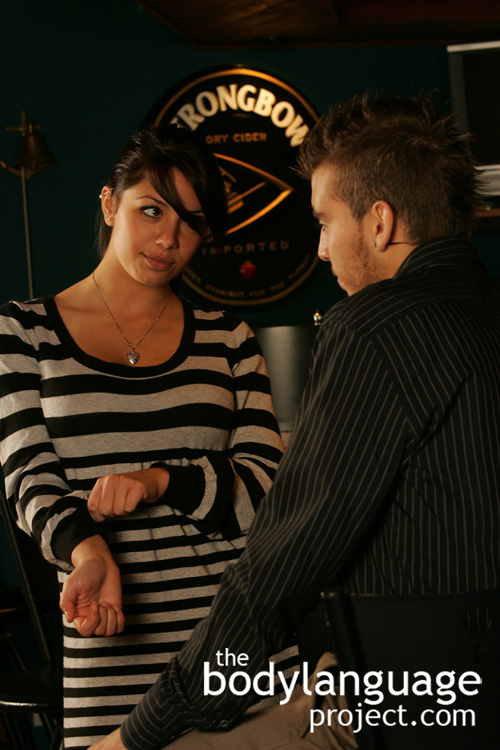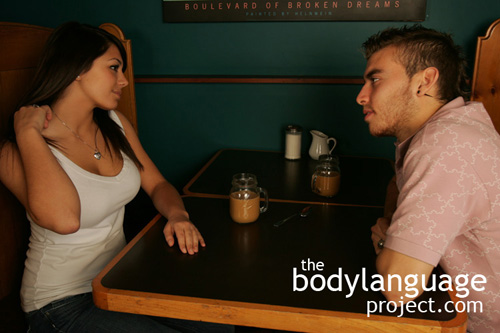The forehead bow is a posture done by artificially lowering the head, then looking up at a man from under the eyebrows in a “come hither” fashion. It has roots in the full bow done as a greeting gesture since it exposes the top of the head making it vulnerable to attack. Just like neck and wrist displays, it indicates that trust is present within courtship. It also comes off as a childlike gesture primarily because children are shorter than adults and habitually peer up at them. As we age, we recall these gestures and go back to them when wish to revive juvenile submissive feelings. The opposite to the forehead bow happens by tilting the head back and looking down one’s nose at someone, which is a judgment posture and is seen negatively.
Smiling frequently can sometimes be sexual, but accompanying signals must be cataloged to create certainty. Women will smile for a great variety of reasons and will smile regularly to appease men for no other reason besides habit. Smiling is a natural part of being a woman and while smiling alone is submissive, it doesn’t necessarily indicate sexual interest. Accompanying signals must adjoin smiling for it to be a true sexual signal. If smiling is done over a shoulder, with pouting lips and partly closed eyes, as in the sideways glance, it should be taken as a sexual cue, but absent, should be construed only as a regular appeasement gesture and nothing more.
The final most common type of submissive signal is childlike playfulness which isn’t a type of posture at all, but it is a form of nonverbal behaviour so it is included here. Stealing a hat, playful teasing, tickling, playing hide and seek or peek-a-boo around objects are forms of play and submission. Acting like a child shows that a person is ready to let their guard down and feel that no threat is present. Threat is a recurring theme as it relates to courtship because a big part of submission is trusting that a man will not abuse the power he is potentially about to be given by a woman. Women begin by providing submission is small doses to see exactly how it is handled. Should she trust him at great lengths without prior history, she will have set herself up for hurt or worse, either emotionally or physically. The act of sex is a risky undertaking for both sexes, but particularly for women, and while we have many ways to reduce the risks in our current society, we still hold the evolutionary hardwiring to fear all possible repercussions.
Above: The “forehead bow” or looking up through the forehead is a childhood throwback where little children would look up at their parents from beneath them. It is a submissive posture that is meant to arouse a caring and kind man, but more importantly, it serves to induce protective feelings from men. The childlike playfulness of the image it portrays is meant to create warm and fussy feelings in men so they are more willing to take care of women. Many more tips and information in the Ebook Body Language Project: Dating, Attraction and Sexual Body Language.





